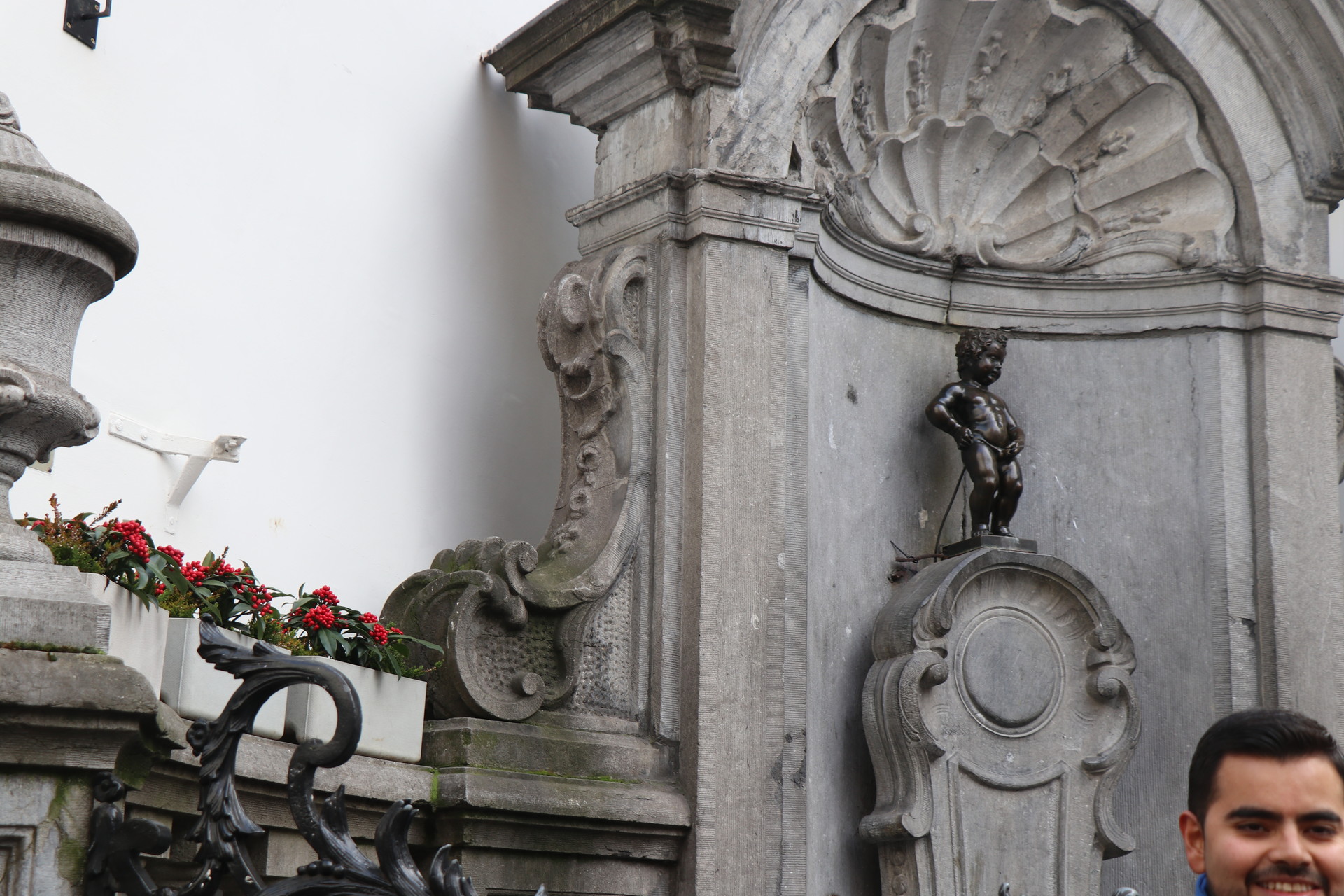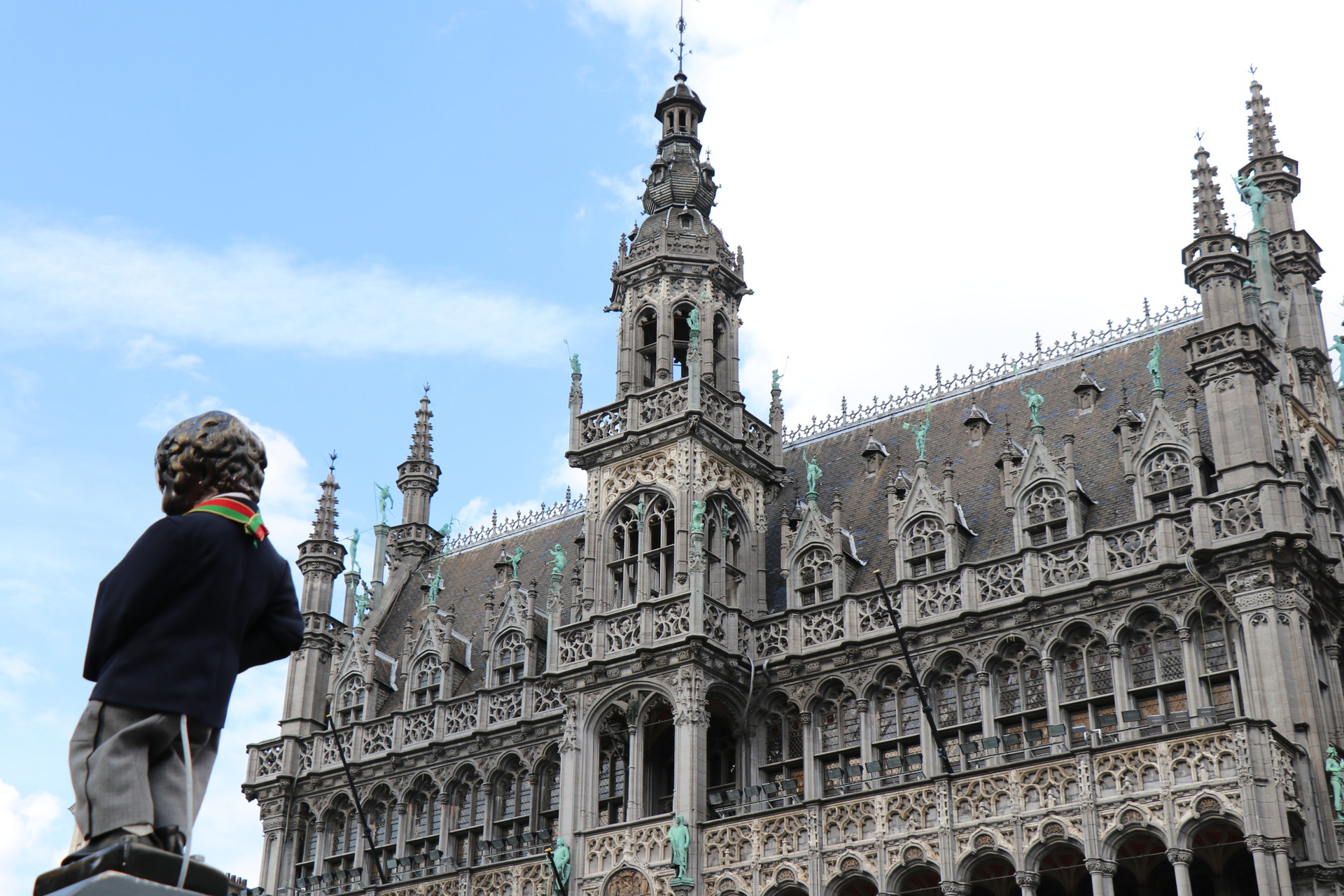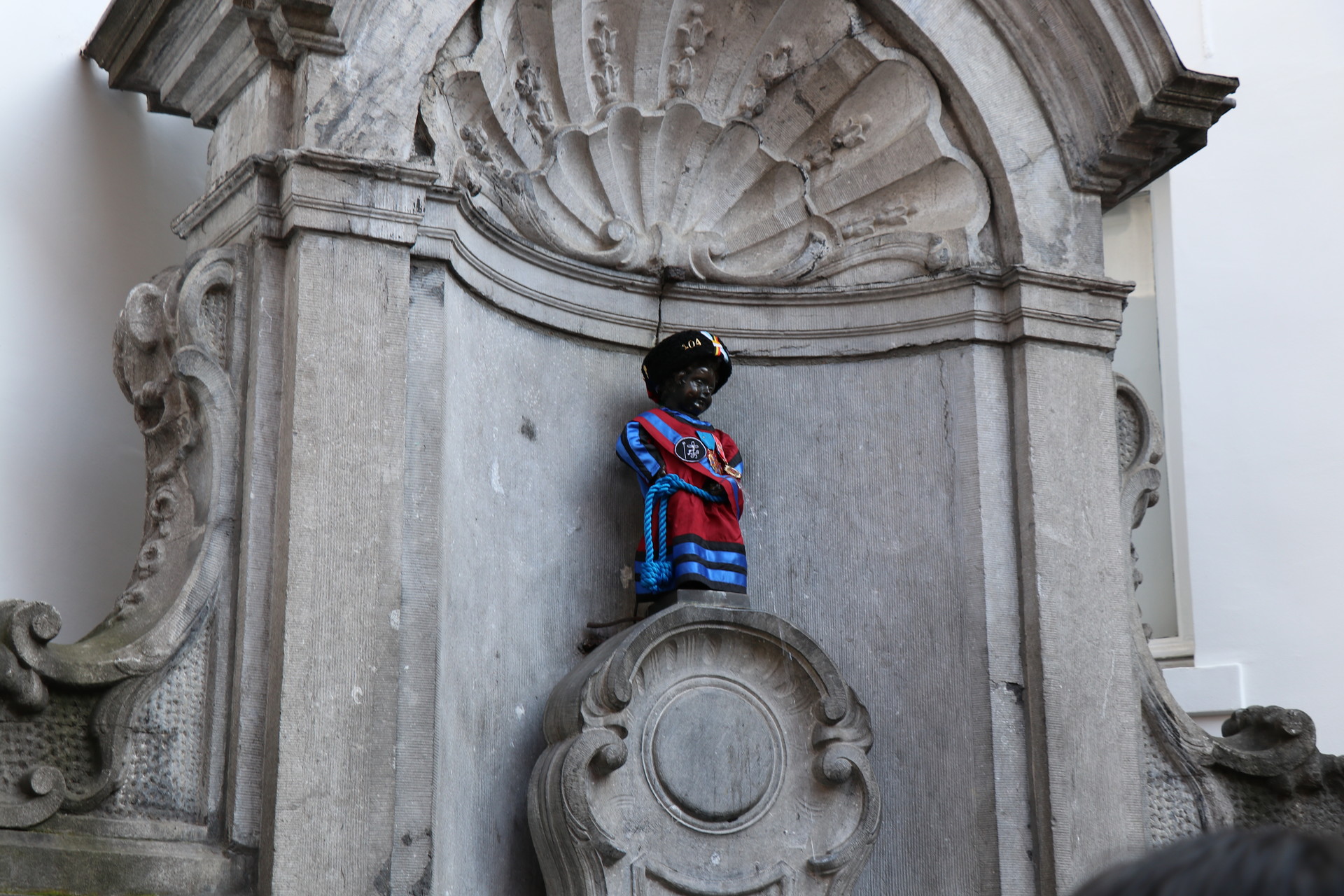Brussels Unhealthy Obsession with Peeing
The Manneken Pis
The Manneken Pis, meaning 'Little Man Wee' in Flemish is the beloved symbol of the City of Brussels and is perhaps the country's most well-known landmark. It is a 61cm tall bronze statue of a small boy peeing into the fountain basin below is said to represent the 'mischevious spirit of the City of Brussels' and attracts hundreds of thousands of visitors a year. It was originally constructed in the 15th Century for use as a water fountain however it now stands carefully protected by a gate. Personally I think this rather unremarkable statue is one of the less important stops on any sight-seeing tour of Brussels. It's located on the corned of two small roads, which are heaving with tacky souvenir stores that have grown up as a result of the sculpture selling miniature copies on everything from key rings, to lifesize Manneken Pis fountains. However, despite my views on how impressive it is, the statue is just one of those things that you have to see if you visit Brussels and so, in true hypocritical style I have taken all of my friends and family that have come to visit to see him.
On the other hand, what is really rather impressive about this small peeing statue is the large history behind it, the various stories about how and why it was created and the size of his wardrobe!

History
There are some references to the Manneken Pis as early as the mid 1400's, however, as I earlier mentioned a bronze statue to replace the original was comissioned in around 1620 to be made by a popular Brussels' sculptor and played an essential part in delivering drinking water to the people of Brussels.
Miraculously the statue was not destroyed in the bombardment of Brussels of 1965, that flattened the Grand-Place and destroyed around one third of the houses in Brussels. Somehow, this little bronze boy avoided the 3000 shells and 1200 incendiary bombs that were fired in its direction by the French. The only damage was to the statue's pipes, meaning that for a short time it was unable to successfully carry out its role as a drinking fountain, however after a while it was back up and running and this is when the statue gained significance as a symbol of Brussels. It is also thought that the Bible passage above his head was inscribed following the bombardment.
And not only has this young boy been subject to continual bombing, but also to multiple occasions of succeful and attempted theft. According to popular Belgian folklore, it was first stolen as early as 1745 by English soldiers, however it was later found in the city of Grammont in the Flanders and as a thank you, the city of Brussels gifted a replica of the Manneken-Pis to them which is still standing and can to this day still be visited.
The second attempted theft occured in 1747, when a group of French Grenadiers under the command of Louis XV of France who were stationed near the capital stole the iconic peeing statue. The population of Brussels were so enraged by this act that they revolted and threatened to seek revenge. In order to avoid riots and inreasing unrest, King Louis returned the statue along with a gold embroidered gown of brocade as an apologetic gesture and presented the sculpture with the Cross of St. Louis.
Seventy years later, it is thought that the statue was again stolen, this time by a fugitive who broke the Manneken Pis into 11 pieces. When he was captured, the culprit was heavily punished and the fountain was welded back together.
More recently the statue was stolen by members of the Antwerp student association called 'De Wikings, ' who borrowed the beloved statue for five days in order to raise money for two orphanages. Although I do not condone theft, no harm was caused and thanks to the widespread media coverage of the incident (both national and international) more money was indeed raised than otherwise. The students also escaped unpunished as a result of their good intentions.
The final theft supposedly occured in 1965 when the statue disappeared and only its feet and ankles remained in their original position. Following an anonymous tip off to the Antwerp Post, the statue was found in the Charleroi Canal and returned to its home.
Realistically it is likely that only a few of these actually occured, or at least that these are exaggerated versions but I'll let you judge that for yourselves. What I can be sure of however, is that the original bronze Manneken Pis is not found at the fountain today, what you see is a replica whilst its predecessor stands in the City of Brussels museum.

Popular Stories as to its Beginnings
Folklore is popular in Belgium and is used by students as a basis for activities in their associations or by cities to explain parts of their history. As to why a statue of a little boy weeing that has now become the symbol of Brussels was created, there are numerous stories for this too. I will list the stories in order starting with those that I find to be most exciting and therefore also probably least realistic and finishing with the most likely explanation.
My favourite story is that the statue was dedicated to a little boy that saved the city of Brussels. In this story it is said that enemies had hidden huge amounts of gunpowder under the city and were planning to blow it up however a young boy noticed and peed on the fuse extinguishing it and saving the city from total destruction.
Another popular story is that the young boy was the son of a Duke, and one time when the troops went to war the baby's basket was hung from the branches of an oak tree in order to motivate the troops. Whilst the battle was ensuing underneath, legend has it that the small boy would stand up in his basket from time to time and urinate on the enemy troops below. When the troops were victorious in the battle they ewnt to celebrate in Brussels and constucted a statue of the young Duke there.
Perhaps the most popular story amongst Belgians and the one told by most of the guided tours is that the statue was commissioned by a relieved father. The story goes that one day the young son of a wealthy merchant went missing whilst he was playing in the street. His mother and father searched endlessly for his and were in despair and so they begged the people of Brussels to help them find their only son. After a long search the boy was eventually found urinating happily in a front garden and so, as a symbol or gratitude the merchant commissioned the statue.
There are also multiple variations of a story, with both sad and happy endings, involving a witch who cursed a young boy who urinated on her front doorstep to stay in the position forever however I've never personally heard these.
The most likely (and also most boring) explanation is that the Manneken Pis was originally based upon the children of the leather tanners in Brussels in the Middle Ages who would urinate on the hides making them more supple. There is not, and will probably never be however a way of knowing for sure and so I prefer to stick with the story of the heroic boy.
The Order of the Manneken Pis
As you can see from all the dedicated legends and history, the Manneken Pis really is a significant figure in the history of Brussels. In fact he's so important that he has his own order that are responsible for the promotion of the Manneken Pis, his protection and of course his extensive wardrobe. They posess a life-size water shooting replica of the statue to tour around with and they have even created their own beer!
This small weeing statue has 23 new outfits EVERY YEAR! that are designed to coincide with some of the important current affairs topics or general popuar culture including a santa claus and mickey mouse outift. As a result the statue now posesses more than 1000 outfits which are housed and on display at the Garde-robe Manneken Pis located a stones throw away. Nobles and world leaders from around the world have gifted expensive items of traditional dress creating a wardrobe that would make even the biggest fashionistas amongst us jealous.

The Jeanneke Pis
Believe it or not, the Manneken Pis is not the only weeing statue in the Capital of Belgium. Located around the corner, outside the popular tourist café Delirium, there's a similar 50-ish cm tall fountain featuring a statue of a young girl squatting for a wee. Also sculpted from bronze and comissioned in 1985 the sister statue to the Manneken Pis has her hair tied back into pigtails and urinates into a blue limestone base.
Unlike her male counterpart, this young urinating female does not attract a large amount of attention and so is left to do her business undisturbed the majority of the time. There are also far less stories relating to the construction of this statue with the most popular one being that she was placed there by a restaurant owner. It is thought that he hoped to draw on the connection to the Manneken Pis in order to attract people down the small alleyway were his business was located and increase the football outside his restaurant.

The Zinneke Pis
As if two urinating stautes was not enough, a statue of a urinating dog was more recently cdesigned and placed slightly further from the Grand Place! This sculpture is not a fountain unlike the other two and it's known for a fact that it was originally comissioned for marketing purposes and to draw businesses to the area.
As you can see, the City of Brussels clearly has an unhealthy obsession with urinating figures as they take so much pride in these sculptures. It's a rather different icon to choose as the main symbol for your city however I do think the folklore behind it is fascinating and its history is unrivalled. Personally I feel sorry for the young girl trapped in an eternal squat as that has got to be extremely strenuous on the legs!
Photo gallery
Content available in other languages
Want to have your own Erasmus blog?
If you are experiencing living abroad, you're an avid traveller or want to promote the city where you live... create your own blog and share your adventures!
I want to create my Erasmus blog! →



















Comments (0 comments)